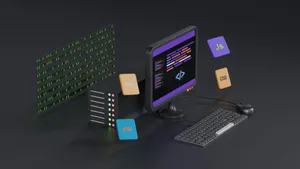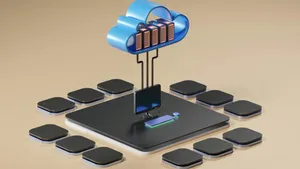
Genesis: The Spark (Part 1)
🧩 The Problem
In 2016, while volunteering for an NGO, we realized we needed a dedicated website. Luckily, one of our members was the Tech Founder of a prominent Chennai-based company. He eagerly took ownership and enlisted his dev team to build it.
Within two weeks, they translated our content into a fully functional static site. It was great, but once we saw it in the browser, we spotted a few areas for improvement. When we asked for changes, the team—bogged down by their own internal projects—told us it would take a significant amount of time to get to it.
Since the site was static and the changes were mostly text-based, they suggested a different approach: do it yourself.
💡 The Solution
I opened the HTML files in a text editor, completely lost. I used Ctrl+F to find the text that needed changing, swapped it out, and refreshed the browser. To my surprise, it worked.
It felt incredibly uncomplicated. Emboldened by that small win, I started poking around different parts of the HTML, wondering if I could change colors or layouts. That moment sparked my curiosity to dig deeper into the world of HTML and CSS.
📚 The Journey of Learning
I found online courses for HTML and CSS and started experimenting. The original NGO site was built with Bootstrap. While I understood how it worked, I wanted to explore alternatives and stumbled upon Materialize CSS.
Materialize offered a starter template that made learning seamless. I quickly hacked together an alternative design for the NGO. Looking back, it wasn’t perfect, but compared to the original Bootstrap site, it felt like a significant upgrade—it had that “web app” aesthetic.
This experience pushed me to build more. I learned how to structure navigation bars, hero sections, and footers. I mastered linking pages and, crucially, responsiveness—ensuring my layouts didn’t break on mobile screens.
☁️ Another Problem: Hosting
I had built several example sites locally and loved the sense of accomplishment, but I hit a wall when I wanted to show them to friends and family outside my city. You can’t just send a file:/// link.
This forced me to dive into the world of domains and hosting. After researching recommendations, I narrowed it down to GoDaddy and SiteGround.
I eventually chose GoDaddy for the domain and SiteGround for hosting. SiteGround won me over with its free SSL certificate (which GoDaddy charged extra for at the time). I followed tutorials to configure the DNS settings, pointing my GoDaddy domain to the SiteGround server. Finally, people could type a name into their browser and see my work.
🎯 Conclusion
What started as a simple need for an NGO website turned into a tech adventure. I went from tweaking text in Notepad to immersing myself in frameworks and server configurations.
The journey wasn’t always smooth, but it revealed the vastness of the digital landscape. It taught me that curiosity and persistence are the most important tools in a developer’s kit.
This is Part 1 of a 3-part series on my tech journey.
Disclaimer
Tools Used:


